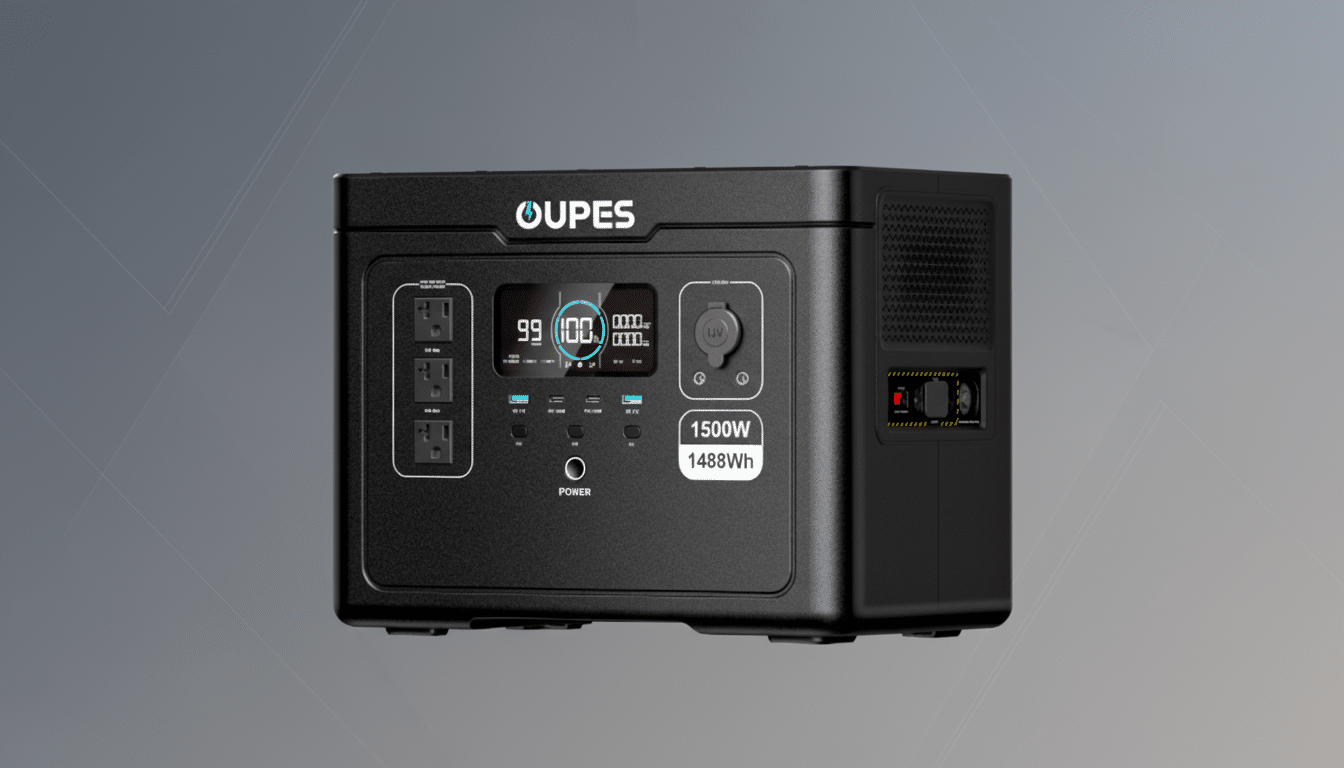OUPES Exodus 1200: A standout portable power station deal just emerged, as OUPES’ 1200 is now $299 (down $250) or so — a 46% drop.
And for a 922Wh power station with numerous AC and USB connections, these are some of the lowest cost per watt-hour you’re going to get — it’s around $0.32/Wh, which rarely goes on sale outside of aggressive clearance events.

Home backup and off-grid power is gaining in popularity as extreme weather continues to be a leading cause of U.S. outages, according to the U.S. Energy Information Administration. And a compact station that can keep the essentials running through a multi-hour blackout or a weekend away — it has come to feel like “a nice-to-have,” at least for many households.
Why This Deal Is So Good for a 922Wh Power Station
At that price, the Exodus 1200 is leagues cheaper than most mid-size competitors. Small to midsize 700Wh to 1,000Wh portable stations on sale now range from $450 to $900 each at launch by established players and are selling for around $0.45 per watt-hour or higher. Hitting the low $0.30 per Wh level is low for a reasonably high-end, fully spec’d unit.
More than just the headline discount, it features a practical configuration: three AC outlets for appliances, two USB-C and two USB-A sockets to keep your gadgets running, all in something that fits in the palm of your hand (approx. 23 lbs). That’s light enough to carry with one hand and small enough to stuff into a closet, an RV cabinet, or the trunk of your car without altering your entire lifestyle.
For price-to-utility shoppers, the Exodus 1200’s combination of capacity, ports and portability is the value story. It’s not overbuilt, it’s simply balanced — a feature you want in any backup tool you’re going to use at all.
Key Specs and Real-World Runtime for OUPES Exodus 1200
Capacity is listed at 922Wh. OUPES calculates that’s sufficient to keep a Wi-Fi router humming for more than 80 hours, to keep a refrigerator chilling for as many as 30 hours, or run a 50-inch TV for more than 10 hours. Take those as a general guide; actual runtime varies with device/motor draw, duty cycles, and temperature, not to mention conversion losses running on AC.
A handy rule of thumb helps to manage expectations. Do allow for about 70% to 80% of rated capacity when you operate AC loads because the inverter must have a margin. For instance, a 60W modem/router combo could have several times that when running on battery; a modern efficient fridge taking 30W to 50W might extend into the dozens of hours if you don’t open the door much; and a TV consuming about 100 watts gets most of a day’s worth.

The station can charge in multiple ways, and usually standard in this class is AC wall charging and solar input through MPPT controllers. If you intend to attach solar panels for storm readiness or camping, look up the input wattage limits and connector standard before making a purchase; having the right panel can greatly decrease recharge time between uses.
How It Compares in the Market Against Popular Rivals
High-brow mid-capacity rivals like the EcoFlow River 2 Pro (around 768Wh) or Jackery Explorer 1000–type units hovering at/under 1,000Wh frequently demand steeper prices, even when belatedly shaved down to a customer-only discount rate. Bluetti’s 716Wh EB70S competes in this range, but usually comes closer to $400–$500 on sale. As a dollar-per-Wh product, the current price of the Exodus 1200 is aggressively low.
Battery chemistry is another consideration. Many newer power stations in this category come with LiFePO4 cells which have a long cycle life and increase thermal/chemical stability. OUPES markets long-cycle chemistries throughout its range; look for the details of the specific cell type and cycle rating of the Exodus 1200 in the product specs if longevity is important to you. If you expect to run the unit often for camping or to shift loads on a daily basis, a higher cycle rating would be worth its weight in gold.
Noise, inverter quality and firmware also are factors. Seek out a pure sine wave inverter for sensitive electronics, and a well-ventilated design that doesn’t run fans at full speed when they’re not needed. Independent lab testing from groups like Consumer Reports has spent decades focusing more on these kinds of practical considerations and less on headline wattage claims, when assessing real-world usability.
Who This Is For and When to Act on This Limited Deal
Whether you value refrigeration during outages, connectivity, CPAP backup, or being able to run small tools and entertainment gear at a campsite or tailgate, it’s hard to beat this capacity sweet spot. The 23-pound weight makes it easy to move around, and the variety of ports means it will accommodate most home gadgets without daisy-chaining power strips.
This is advertised as a temporary deal, and may be linked to a lightning window period or while quantities last. As NOAA and EIA data continue to trend severe-weather incidents as one of the leading drivers, hopping on a sub-$300 900Wh-class station makes for prudent insurance before the next storm blows through.

